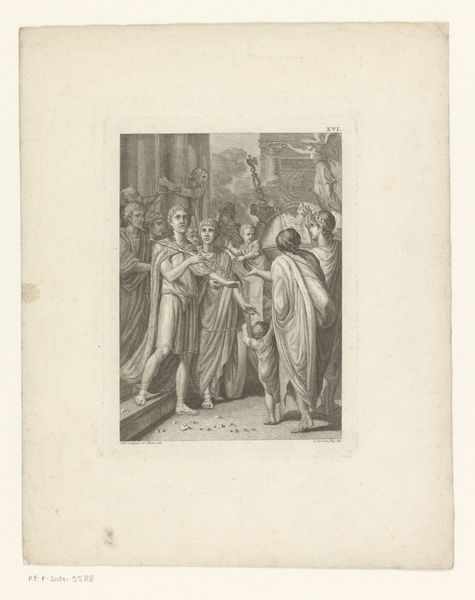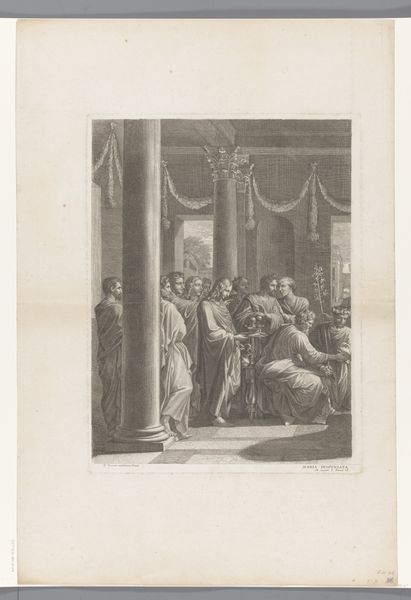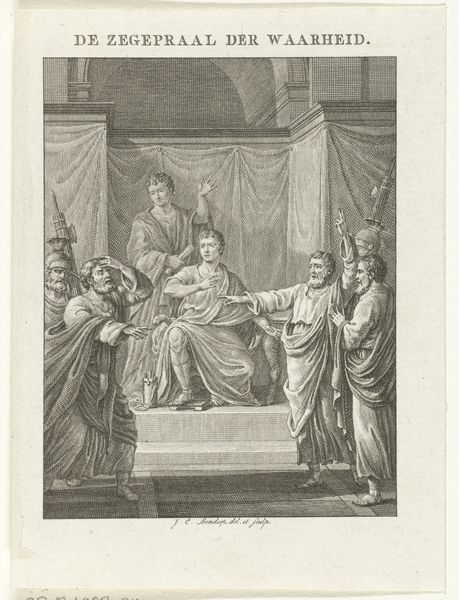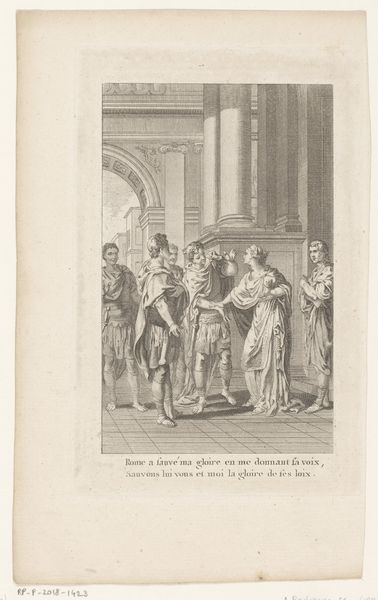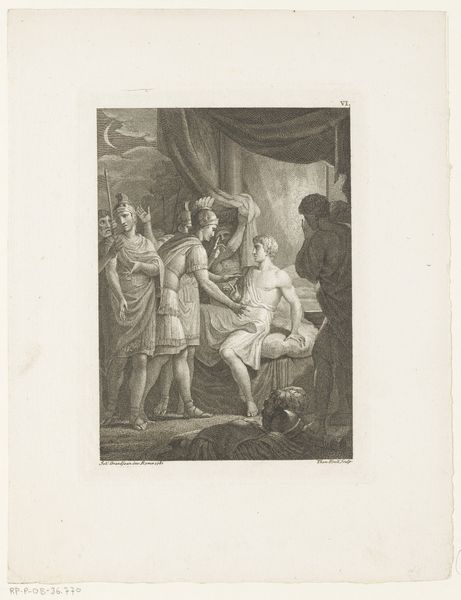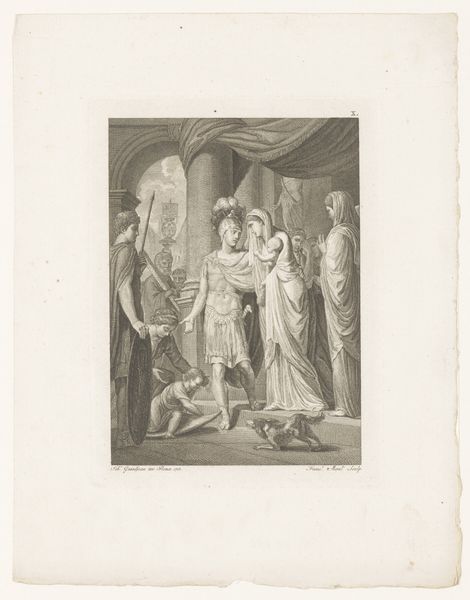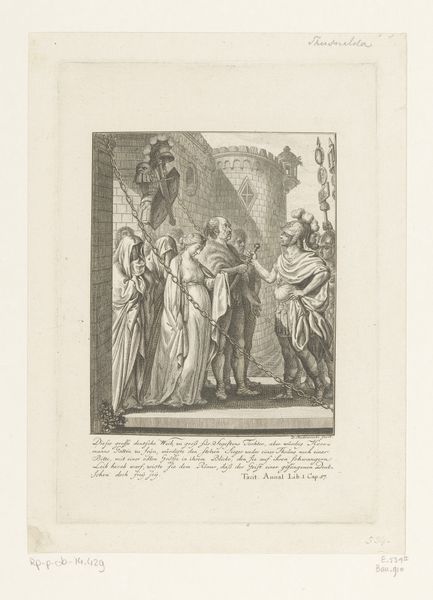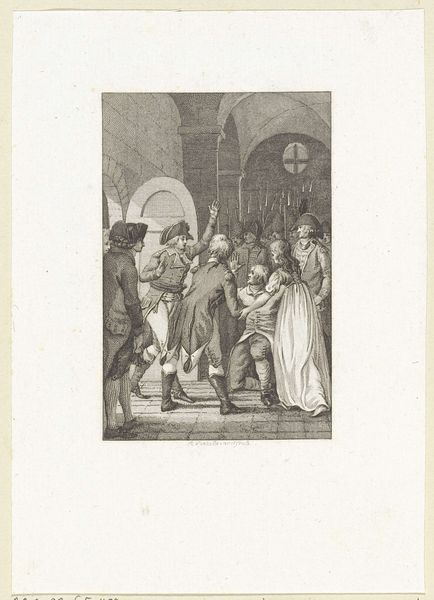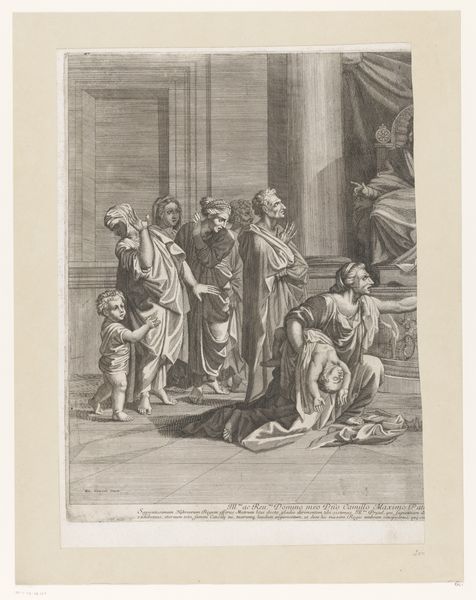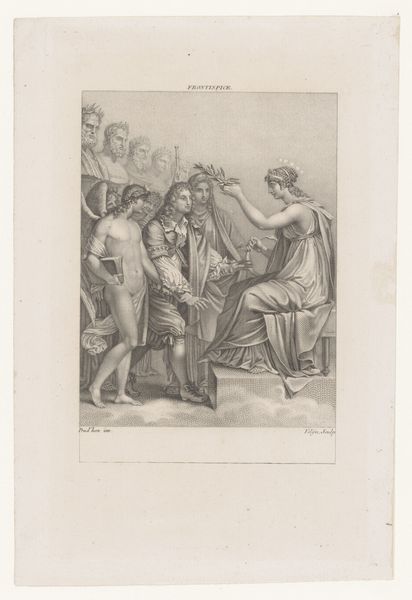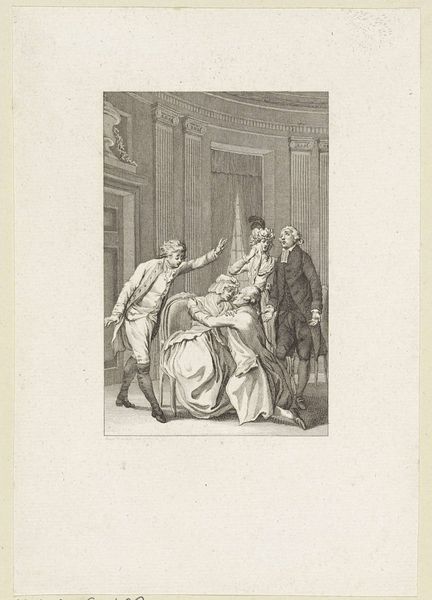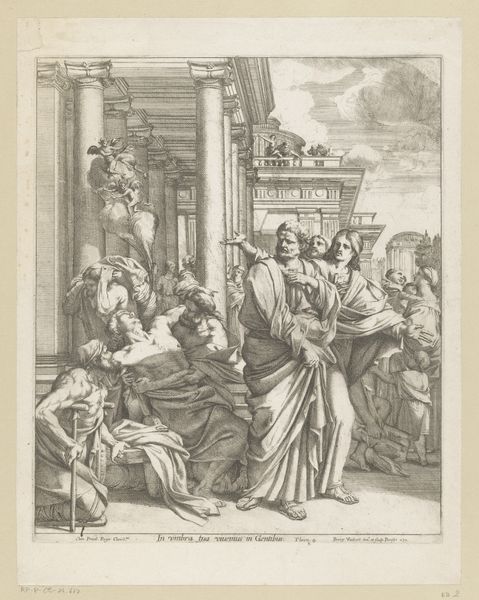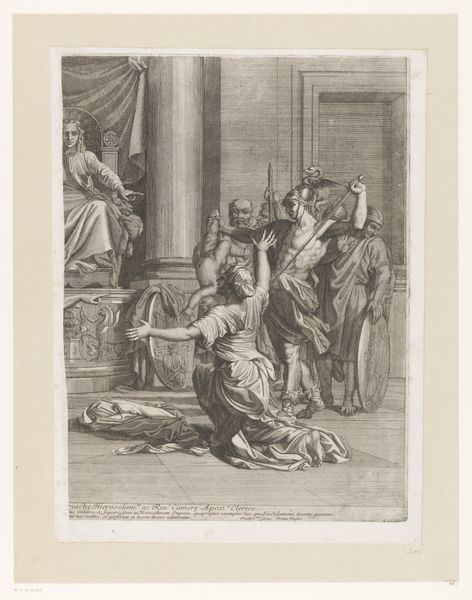
paper, engraving
#
neoclacissism
#
narrative-art
#
old engraving style
#
classical-realism
#
figuration
#
paper
#
line
#
history-painting
#
engraving
Dimensions: height 190 mm, width 141 mm
Copyright: Rijks Museum: Open Domain
Editor: Here we have "Germanicus wordt 's nachts gewekt in het legerkamp," or "Germanicus Awakened at Night in the Army Camp," an engraving from 1781. It's quite detailed, a monochrome world of lines and shading, that somehow still has life in it. What do you see in this piece, from an art historical perspective? Curator: Focusing on its formal properties, we see a masterful use of line to create depth and volume. Observe how the varying density and direction of the lines sculpt the figures and the architectural setting. This is Classical Realism, isn't it? The artist skillfully employs chiaroscuro, manipulating light and shadow to draw attention to key narrative elements. What feelings do these specific techniques stir? Editor: It does feel very… purposeful. The composition leads the eye to Germanicus at the center, of course, but also to the figure gesturing towards him. It's almost theatrical. Curator: Precisely. Consider how the arrangement of the figures adheres to Neoclassical principles of order and balance. The figures are meticulously posed, evoking a sense of controlled drama. Now, examine the architectural elements: the columns, arches, and the suggestion of a distant structure. Editor: They frame the scene and add to that feeling of almost stage-like space, right? It's all very balanced and deliberate. Curator: Indeed. The interplay between form and content is where the work finds it richness. What would you take away as key takeaway? Editor: The careful arrangement and technique draw you in. Curator: It is the meticulous design of this engraving that ultimately elevates its aesthetic and narrative impact.
Comments
No comments
Be the first to comment and join the conversation on the ultimate creative platform.
